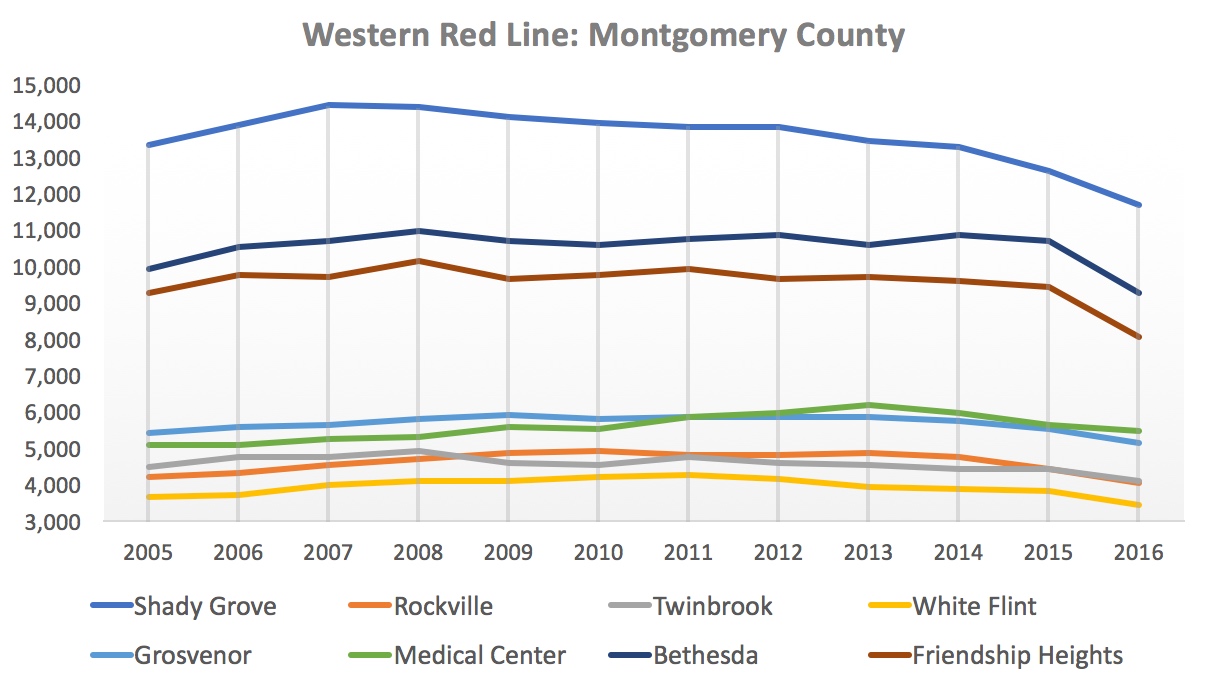 The six graphs – one for each Maryland branch of the Metro – in today’s post reveal the ridership figures for all Maryland Metro stops from 2005 through 2016. They’re not encouraging either for the health of the system or cherished myths around it.
The six graphs – one for each Maryland branch of the Metro – in today’s post reveal the ridership figures for all Maryland Metro stops from 2005 through 2016. They’re not encouraging either for the health of the system or cherished myths around it.
Transit Always Heralds Urbanism
“If you build it, they will come.” Usually not. In Maryland, only three stops have become high traffic urban nodes: Bethesda, Silver Spring and Friendship Heights – the latter is shared with the District. The other 24 stops have not witnessed remotely this level of impressive urban development or Metro ridership. Outside the urban three, the highest ridership occurs mainly at end-of-the-line commuter stops, such as Shady Grove, Greenbelt and New Carrolton.
Transit advocates and developers are both very attached to this myth. The former because they believe fervently in transit. Developers like it because they are permitted to build far more when transit is built, which allows them to make a lot more money even if nobody ever rides it. Proximity to transit also raises the value of their property at somebody else’s expense.
 The uncomfortable truth is that no nodes similar to Bethesda or Silver Spring – or Ballston or Rosslyn – have emerged in Prince George’s County. Leaving aside the terminus stops, ridership is not very high and certainly not growing. And the terminus stops have seen more precipitous declines than in Montgomery – 34% at New Carrollton, 21% at Greenbelt, and 20% at Branch Avenue.
The uncomfortable truth is that no nodes similar to Bethesda or Silver Spring – or Ballston or Rosslyn – have emerged in Prince George’s County. Leaving aside the terminus stops, ridership is not very high and certainly not growing. And the terminus stops have seen more precipitous declines than in Montgomery – 34% at New Carrollton, 21% at Greenbelt, and 20% at Branch Avenue.
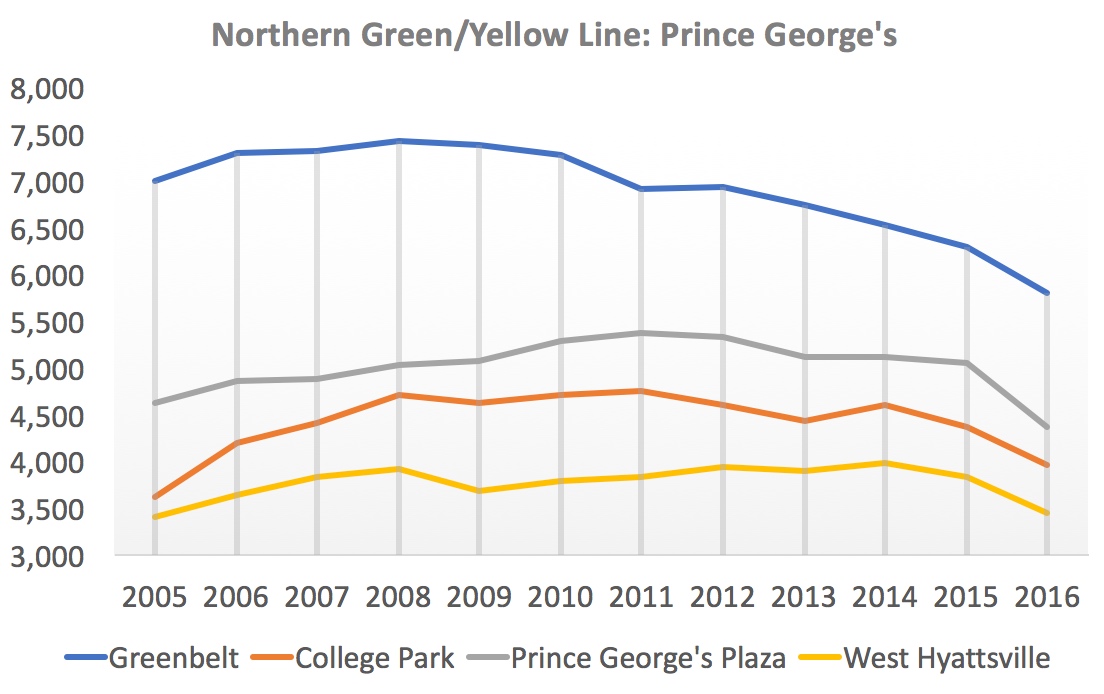
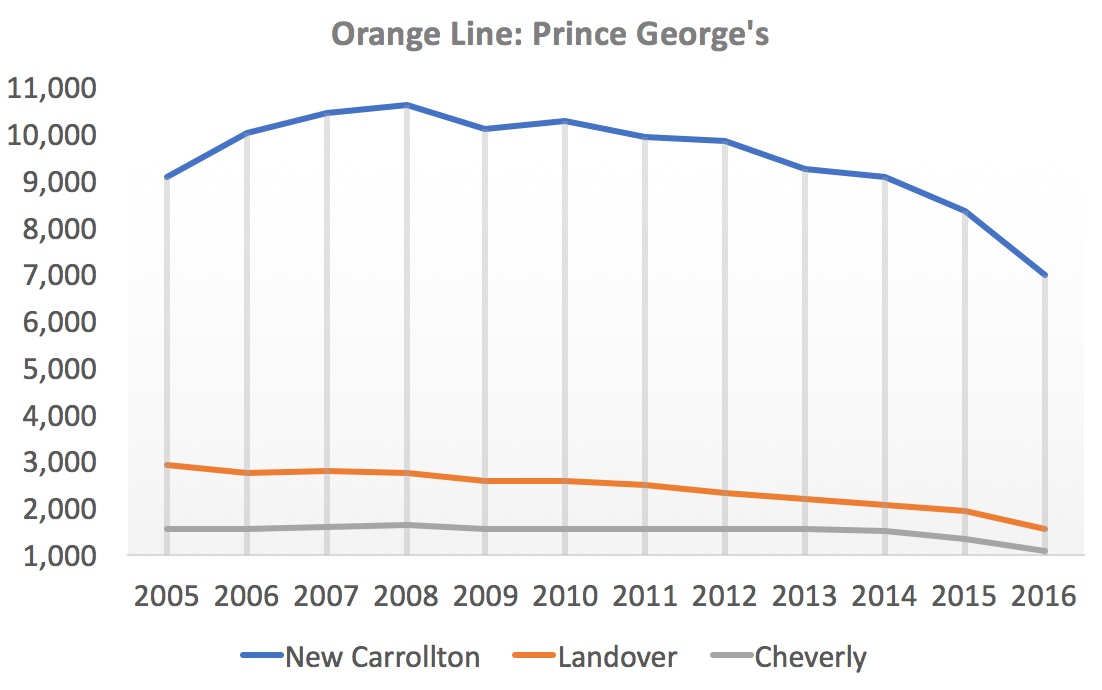 Thriving Urbanism Heralds More Transit Riders
Thriving Urbanism Heralds More Transit Riders
Not necessarily. Bethesda, Friendship Heights and Silver Spring have continued to grow yet ridership has declined. In 2016, all three served many fewer riders than at their peak – 15% in Bethesda, 17% in Silver Spring, and 20% in Friendship Heights.
Transit is a positive for these areas but it’s only one factor among many. It’s not that smart growth or new urbanism is totally off base. The focus on transit may lead to overestimation of its importance to successful development. Density and the mixture of residential and commercial looks more crucial to their continued success. It’s why places like the Kentlands thrive even though they’re nowhere near Metro.
There is little sign that less intense development around Metro stations other than the big three has increased ridership either. Throughout the Maryland portion of the system, ridership has tended to stay flat or decline. Remember that this has occurred despite population increases in both Prince George’s and Montgomery. 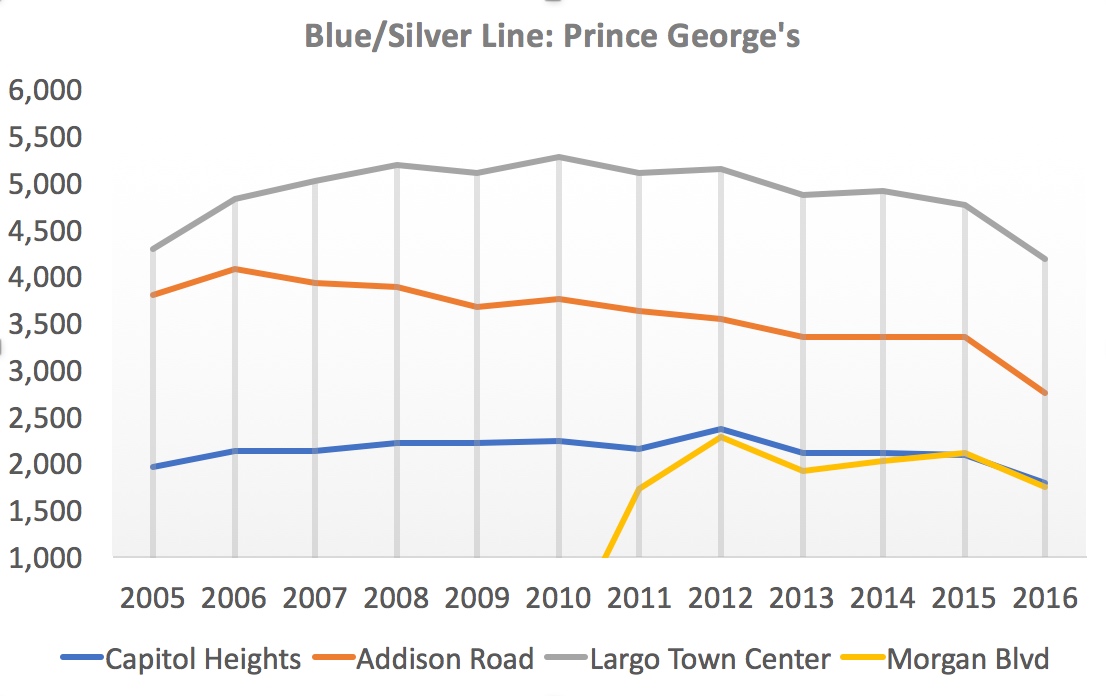
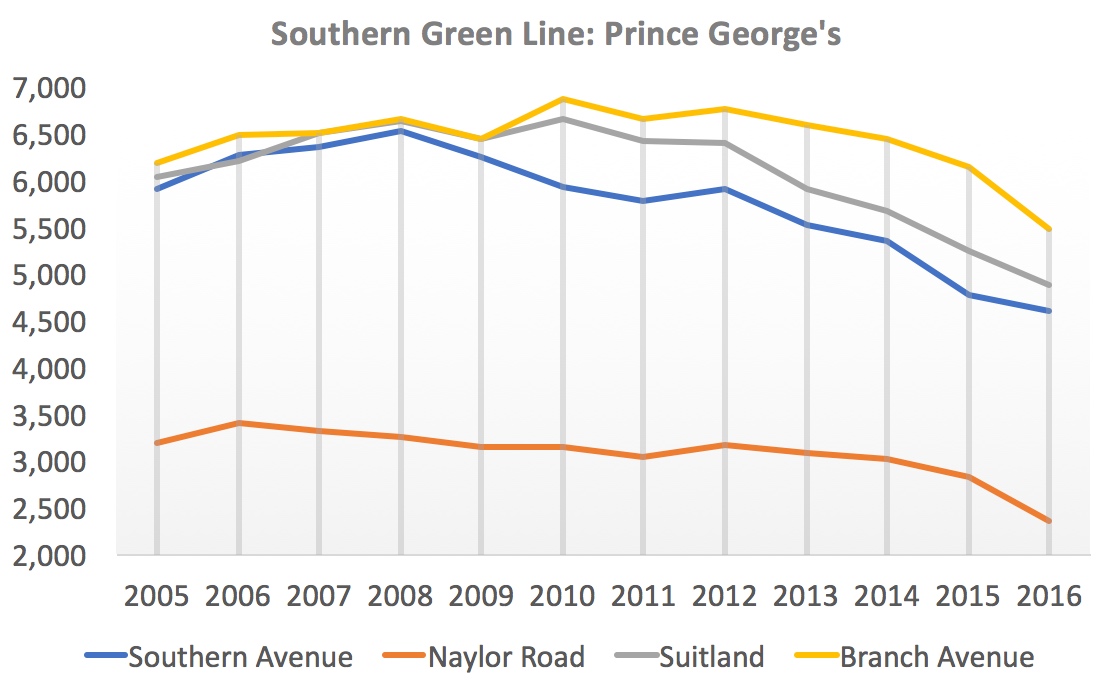
Declining Ridership is Temporary
Two major excuses are given for Metro’s declining ridership: the financial crisis and Metro’s “temporary” maintenance backlog. At this point, the former explains little as the recession is over and the population is now higher, so Metro should have more riders. The latter is belied by the similar decline in Metro’s bus ridership. Moreover, SafeTrack will not bring the system back to tip-top condition but simply prevent its complete collapse, as General Manager Paul Wiedefeld has been at pains to point out.
The wheel of technological change is driving changes in transportation patterns fast. Increasing numbers of jobs can be done via telecommuting. Competition from services like Uber and Lyft are remaking the taxi industry and attracting many new riders. Every price increase in Metro or its parking lots only makes them more competitive – and the price of both is likely to head up.
